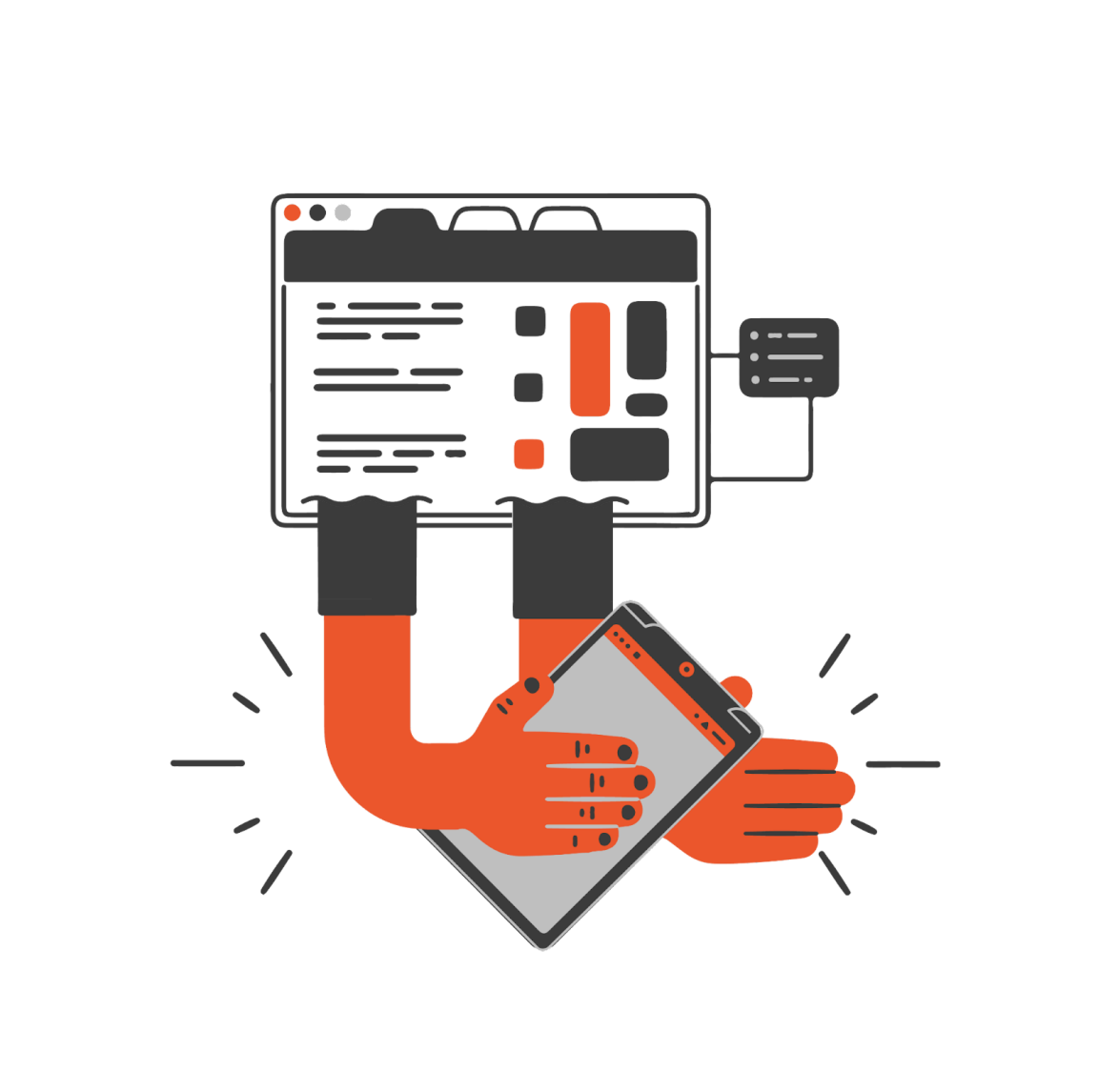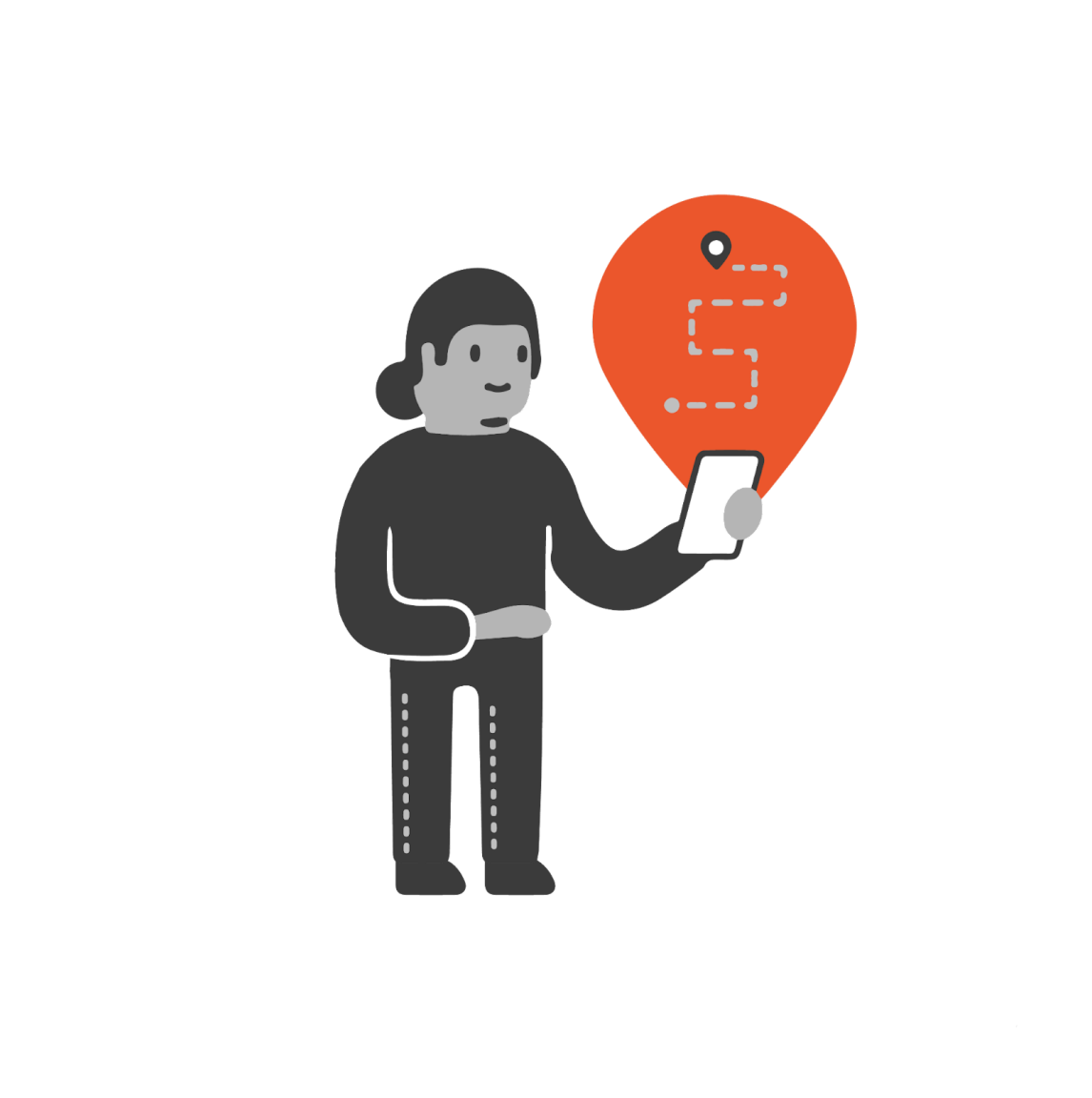Orbit for Honda
Overview
Collaborate with Honda R&D to better support passengers in self-driving shared vehicles.
Methods
Contextual inquiry, diary study, quantitative research, speculative design, lo-to-hi fi prototyping, usability testing
This eight-month capstone project is sponsored by Honda's 99P Labs, an innovation hub for future mobility and energy solutions. This project focused on facilitating the adoption of autonomous vehicles by meeting needs of passengers in lieu of human operators.
Background
I worked as the product designer in a team of 5 researchers, designers, and technologists. I’m responsible for user flows, wireframes, lo-fi to hi-fi prototyping, usability testing, design system, and design research.
Role
Understand what new passenger behaviors and associated models will emerge with telepresent forms of attendants on public transit.
Find out what embodiment of attendant works best in public transit.
Provide an interactive solution to support passengers’ needs and goals in public autonomous transit.
Goals
A multi-modal ecosystem including a mobile app, a built-in screen, and a VUI system that provides support for passengers sharing autonomous vehicles.
Solution
The deliverables include a research report, a project website, a product demo video, and Medium post articles. 99P Labs will fold our research and solution into their future internal projects.
Outcome

Revolving around
passenger needs with Orbit.
context | research | insights | exploration | solution | outcome
What happens when there is no human driver?
problem
Our team specifically looked at shared vehicles that transport a transient community of ad hoc passengers. We were asked to explore the following problem statement: How might the current passenger behaviors and associated mental models change when the attendant on a public people mover is available via telepresence or is a synthetic representation of an agent?
opportunity
Unprecedented growth of autonomous driving market
The global autonomous vehicle market is projected to reach $2,161.79 billion by 2030, with a CAGR of 40.1% from 2021 to 2030. From Tesla to DoorDash, many companies are joining the game to apply autonomous driving technology on their products. The introduction of Level 4 driving automation technology brings many opportunities in driverless taxis and public transportation services.
business value
Honda can expand its business scope to public transportation
Every weekday, people in the US board public transportation for 34 million times, while the ownership of privately owned vehicles declined. And Honda is the first automaker in the world to sell an approved Level 3 (conditional automation) jam assistance system. With the fast growth of self driving technology, Honda could further unlock the market value of public transportation automation.
why now
Build a sense of confidence and trust for a new technology
Instead of creating a futuristic solution based on imagination, our team decided to focus on bridging the gap between now and future. We hope to used autonomous technology to solve current pinpoints and improve passenger experience. By following the tech adoption curve, we want to help mainstream majority users building trust towards autonomous driving technology.
context | research | insights | exploration | solution | outcome
Desk Research
In order to better understand capabilities and constraints of current autonomous driving technology, we read 30 academic papers and research articles focusing on topics such as accessibility, AI, self driving, and human-robot interaction.
Expert Interviews
We talked to 13 experts or people with unique perspectives such as city ADA coordinators, shared ride service designers, and AI researchers. They helped us to understand how people build trust towards AI attendants in the public transportation.
User Interviews
We conducted semi-structured interviews with 12 regular commuters of different demographics. Through directed storytelling, they shared use cases in which passengers interact with some form of attendant, or experience unmet needs.
Contextual Inquiries
Diving deep into passengers’ explicit and unsaid needs that arise when riding public transportation, we ride along with 5 participants as they complete routine journeys to observe and understand their actions, mental models, and expectations.
Diary Studies
We completed diary studies with 14 participants on dscout platform to see what their daily commute is like. They shared moments in transit journey - what they notice and pay attention to, as well as how they interact with people and system.
context | research | insights | exploration | solution | outcome
Through user research I was able to pinpoint a handful of specific behaviors on public transportation. From these findings, I compiled a non-exhaustive group of 9 “behavioral archetypes” to help guide future design decisions and opportunity areas. Designed in the form of cards, each archetype represents specific themes and needs observed throughout multiple modes of research.
Behavioral Archetypes
insight 01
Passenger familiarity with their route, the environment, and the system influences their riding experience
Familiarity
insight 02
Passengers will access information from the system through many different modalities - whether its built-in screens or personal devices
Modality
insight 03
The system needs to give feedback at the appropriate moment, but also needs to be discreet enough so as not to be intrusive during the journey
Discretion
insight 04
Other passengers have a significant impact on a rider’s experience - the system should consider the presence of other passengers and adjust
Inter-passenger Dynamics
Reframed Problem Statement
How might we design a consistent, discreet, and accessible ecosystem that increases a commuter's sense of safety and confidence in autonomous shared transit?
context | research | insights | exploration | solution | outcome
I explored potential solutions through sprint based prototyping iterations.
Moving from research to design, each sprint consists of the following phases: plan, ideate, prototype, test, and synthesize. With the increase of fidelity in three modalities, I conducted different types of usability testings to ensure the solution could utilize user needs and solve painpoints.
sprint #1
Users pinpointed gaps in information that may arise among modalities.
In this sprint, I built paper prototype to simulate in-vehicle environment as well as built in screen and audio system (WoZ). We invited participants at a farmer’s market to navigate available modalities of information in unexpected scenarios, when there is not a human present to help them. As a result, our team created a modality site map to categorize features and flows based on user feedback.
sprint #2
Users were able to complete essential tasks even in high risk scenarios.
As the fidelity of prototypes increases, I want to understand the end-to-end process of passengers experiencing their ride via my system. I focused on testing amount and specificity of information, as well as thresholds with edge cases. We drove passengers around the city for 45 minutes long ride along usability testing. The in-vehicle environment is set up to simulate a real autonomous ride. A series of design decision were made based on testing result to shape the final solution.
sprint #3
Users felt safe and supported with the information provided by our system.
In order to study whether or not a user can use our system for its intended function, I tested lofi prototypes with multiple high risk scenarios such as rerouting and emergency response. User feedback indicated that: 1) notifications should be sent sparingly unless critical; 2) time is of the essence - user confidence decreases when ETAs are unclear.
context | research | insights | exploration | solution | outcome
Orbit is a multimodal system that communicates information across build-in screens, passengers’ personal devices, and a conversation-based user interface, with the additional layer of live agent support available via telepresence. Through three key touch points - seat selection, notifications, and live support - passengers can be supported and guided throughout every step of their journey.
I built an ecosystem of attendants to support user needs in shared autonomous cars.
seat selection
Allowing users to select seats pre-trip.
Foundational research highlighted the influence other passengers have on a transit experience. With this in mind, I designed a mobile seat selection feature to enable passengers to become familiar with their environment before boarding the ride.
notification
Notifying passengers about trip updates.
Although the steering wheel is out of passengers’ hands in an autonomous vehicle, Orbit provides live view and tracking to give back some of that agency. It also keeps passengers informed through notifications based on scenario urgency. When risk level is lower, discretion level becomes higher.
live support
Providing live support anytime, anywhere.
The three-pronged system is effective for meeting a majority of passenger needs. But sometimes passengers prefer real-time support from a live agent. While help option is always available, it is displayed more prominently as situations become high-risk or increase in complexity.
context | research | insights | exploration | solution | outcome
project impact
Create value and provide recommendations to Honda
Honda’s 99P Labs will continue to collaborate with CMU MHCI on autonomous vehicle studies while folding our solution into their future projects. We provided additional aspects of the system beyond what our team has envisioned so far and recommendations of potential research directions.
key takeaway
Embrace ambiguity, contradictions, and nuance
Initially, I felt overwhelming and anxious with the thickness of information. But I gradually learnt to focus on those related to our target user group while also keep edge cases in mind, and design fall back support options for those cases to build user trust for this product.
external links
Access more project information


























